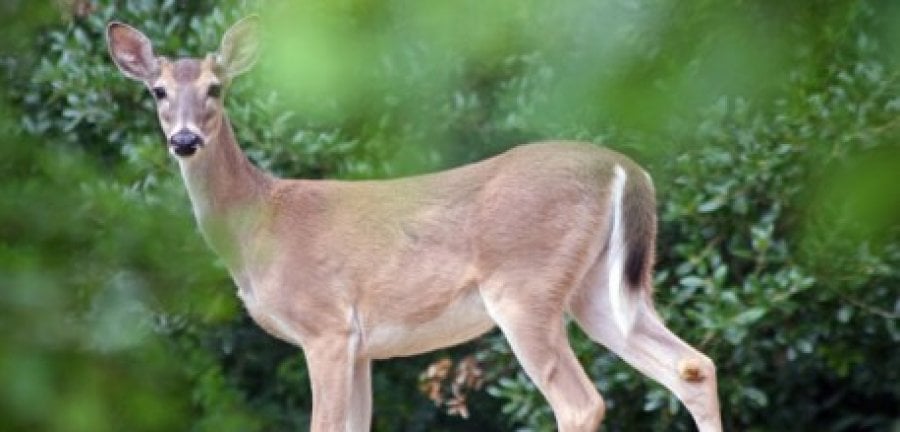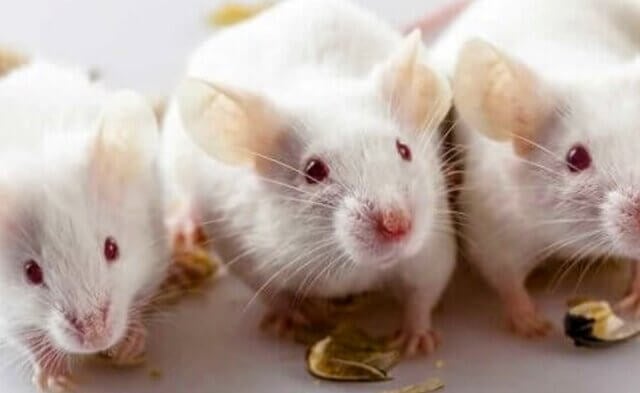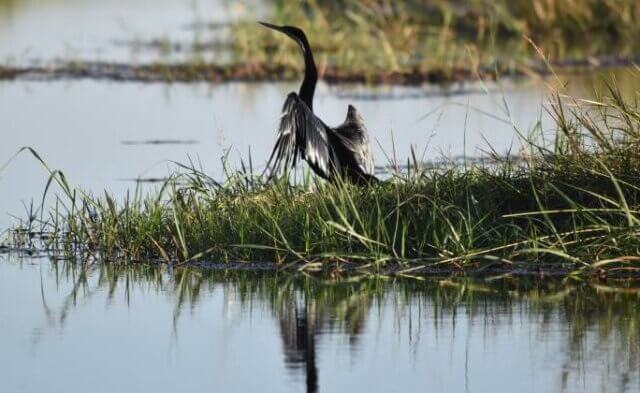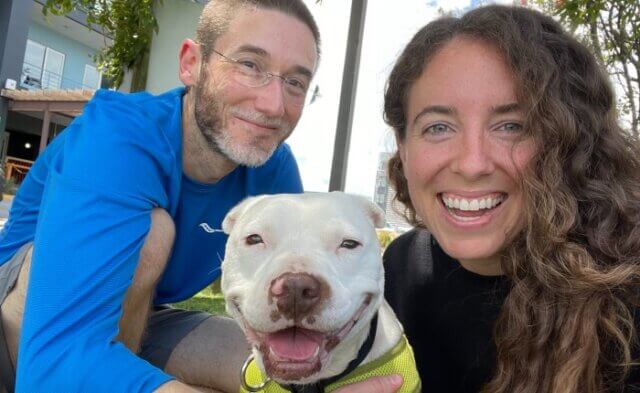My fiancé and I recently moved to a small rural town in western Wisconsin. I grew up in Los Angeles, and my fiancé grew up near Chicago, so needless to say, country living is pretty new to both of us. Our house is in a 45-acre forest that is surrounded by dairy farms and cornfields (where trees once stood), so our home is a sanctuary for wildlife.
On a daily basis, we see chipmunks scurrying across and playing on big boulders, birds of all colors perching on branches and making the most beautiful orchestra of sounds, frogs using their astonishing sticky feet to climb our windows for a peek inside, gorgeous giant moths posing perfectly for photos, and many majestic, gentle deer. Just a few mornings ago, I heard a sound outside the bedroom window and looked out to see a beautiful female deer peering through the trees at me.
Living in nature is wonderful, but we have had to adjust to make it work for us and for the animals in the area. We are doing our best to live in harmony with all the life around us. They call this land their home, just as we do.
We make sure that our trash cans outside are sealed tightly, but in case any critters do get into them, I am careful to rinse all empty food cans thoroughly, and I cut vegan yogurt containers in half so that no one will ever get their head stuck while looking for a snack. When taking summer strolls, we use natural insect repellents on our clothing—even vanilla extract works well to deter bugs, instead of harsh chemicals or bug killers. We have translucent stickers on our windows so that birds don’t fly into the glass. We have PETA’s humane mouse traps on hand for any rodents who might find their way into our home.
We don’t hunt and won’t let anyone hunt on our land, so we will be posting “No Hunting” signs around the perimeter of our property, and we hope that the many deer we have been seeing this summer will take refuge on our land during hunting season.
Living among wildlife is a joy and has given me the opportunity to observe them closely enough to appreciate that animals have their own unique languages, families, and communities, just as we do.
In jarring contrast to our sanctuary, we are surrounded by numerous farms where people are raising animals for meat and dairy products. While driving down the highway, you can see rows of tiny white structures resembling igloo doghouses dotting the fields. These are where calves are raised in solitary confinement so that they do not drink their mother’s milk, which is used for human consumption. There is also a pig factory farm right off a main road, and although I can’t see inside the huge sheds, I know what is going on in there. You can smell the waste, thick in the air, as you drive by.
It is hard to live in such close proximity to these farms, knowing what they are doing to the animals, but I know that my choice to go vegan is helping to end this suffering. I hope that our example—living in harmony with both wild and domestic animals—will serve as an inspiration to others. I tell as many people as I can about the benefits of going vegan, including protecting the environment, our health, and animals, knowing that spreading the word will make a difference for animals who are suffering almost literally in our backyards.
Melissa Karpel is a Philanthropic Specialist with the PETA Foundation, and prior to that she worked as a PETA Campaign Coordinator, traveling the world leading demonstrations for animals. She loves to cook experimental vegan dishes, going to the opera, and sharing her home with her adopted cats: Roger, Macy, TessyBird, Oliver, and Franny and her adopted dog, Daisy.






